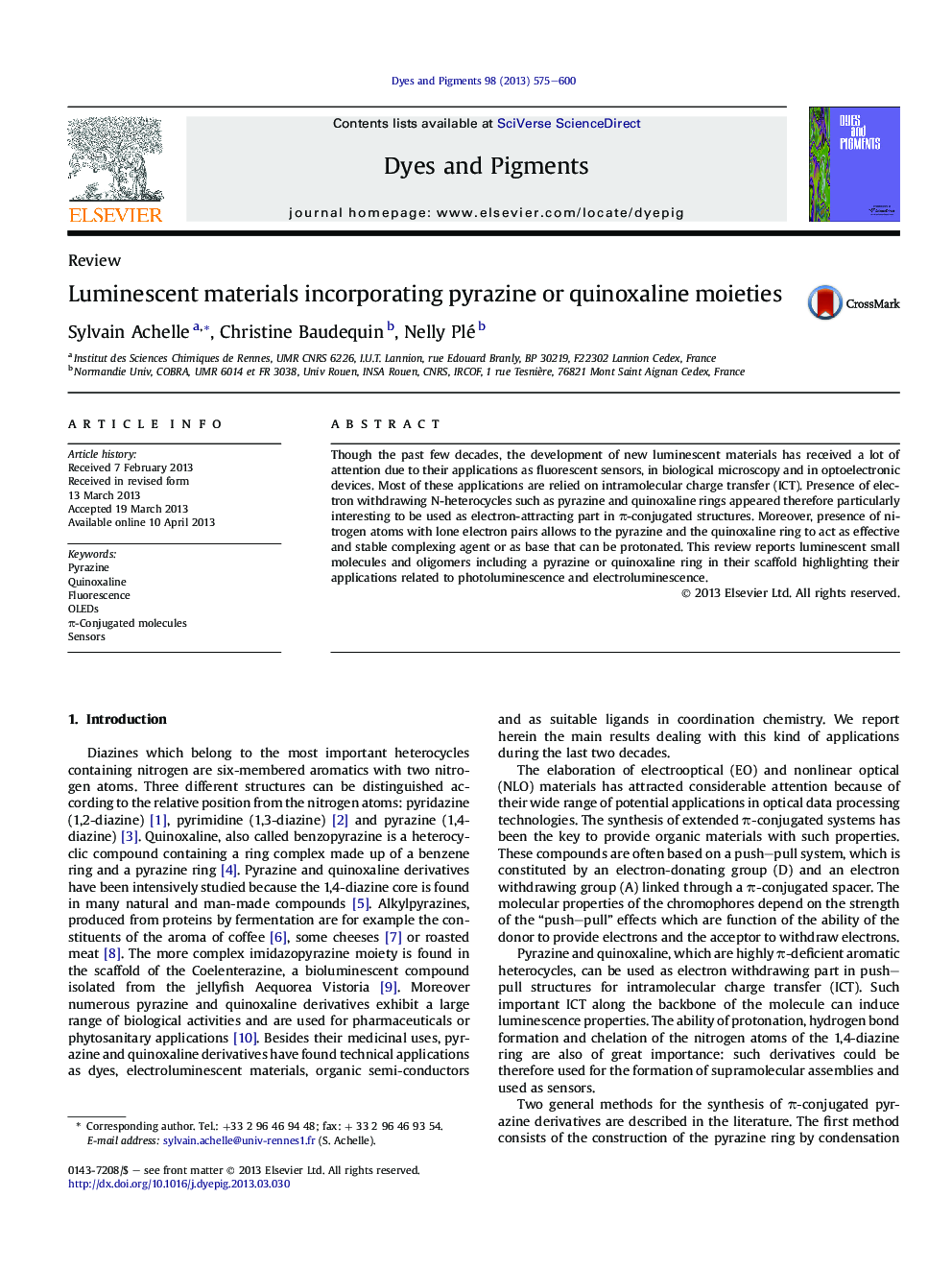| Article ID | Journal | Published Year | Pages | File Type |
|---|---|---|---|---|
| 176465 | Dyes and Pigments | 2013 | 26 Pages |
•Numerous pyrazine and quinoxaline derivatives are luminescent.•These rings can be used as electron-attracting part in π-conjugated structures.•Sensing applications results from their complexing and basic properties.
Though the past few decades, the development of new luminescent materials has received a lot of attention due to their applications as fluorescent sensors, in biological microscopy and in optoelectronic devices. Most of these applications are relied on intramolecular charge transfer (ICT). Presence of electron withdrawing N-heterocycles such as pyrazine and quinoxaline rings appeared therefore particularly interesting to be used as electron-attracting part in π-conjugated structures. Moreover, presence of nitrogen atoms with lone electron pairs allows to the pyrazine and the quinoxaline ring to act as effective and stable complexing agent or as base that can be protonated. This review reports luminescent small molecules and oligomers including a pyrazine or quinoxaline ring in their scaffold highlighting their applications related to photoluminescence and electroluminescence.
